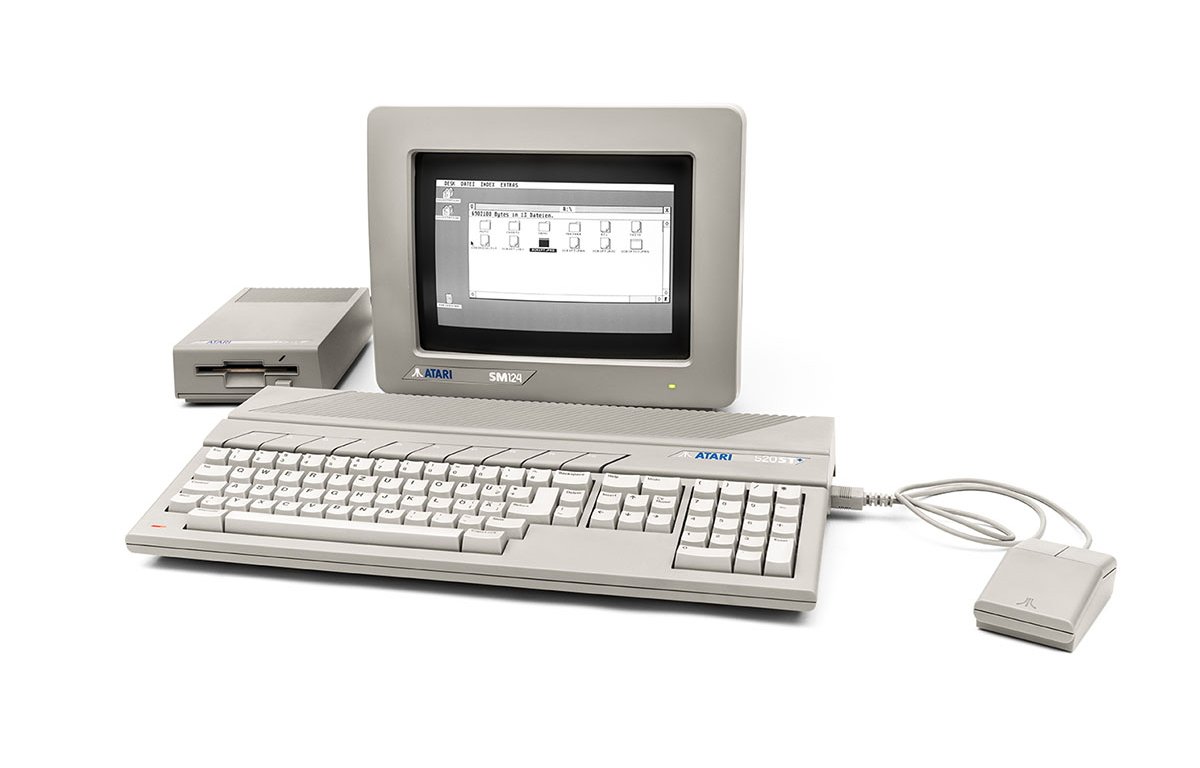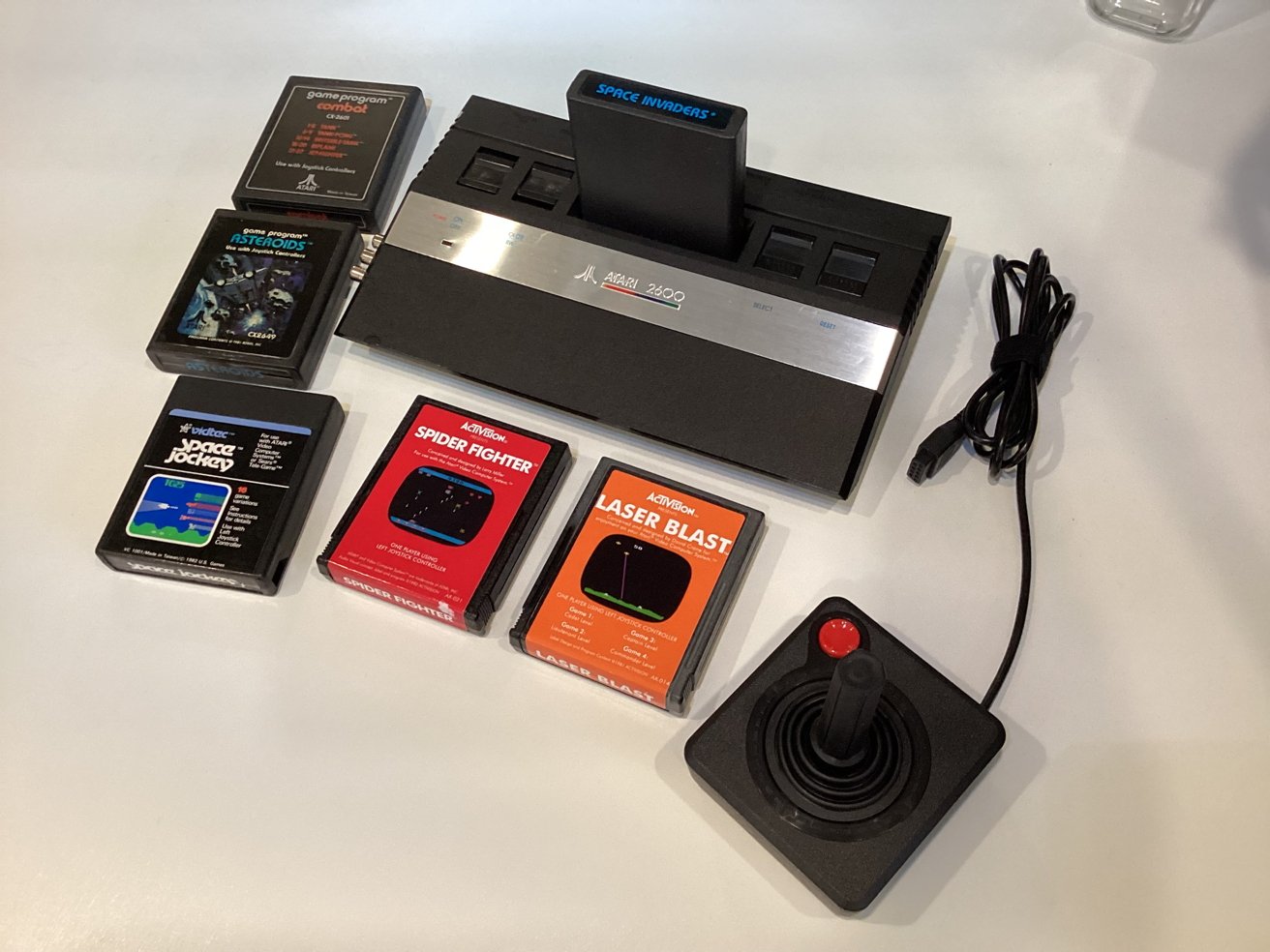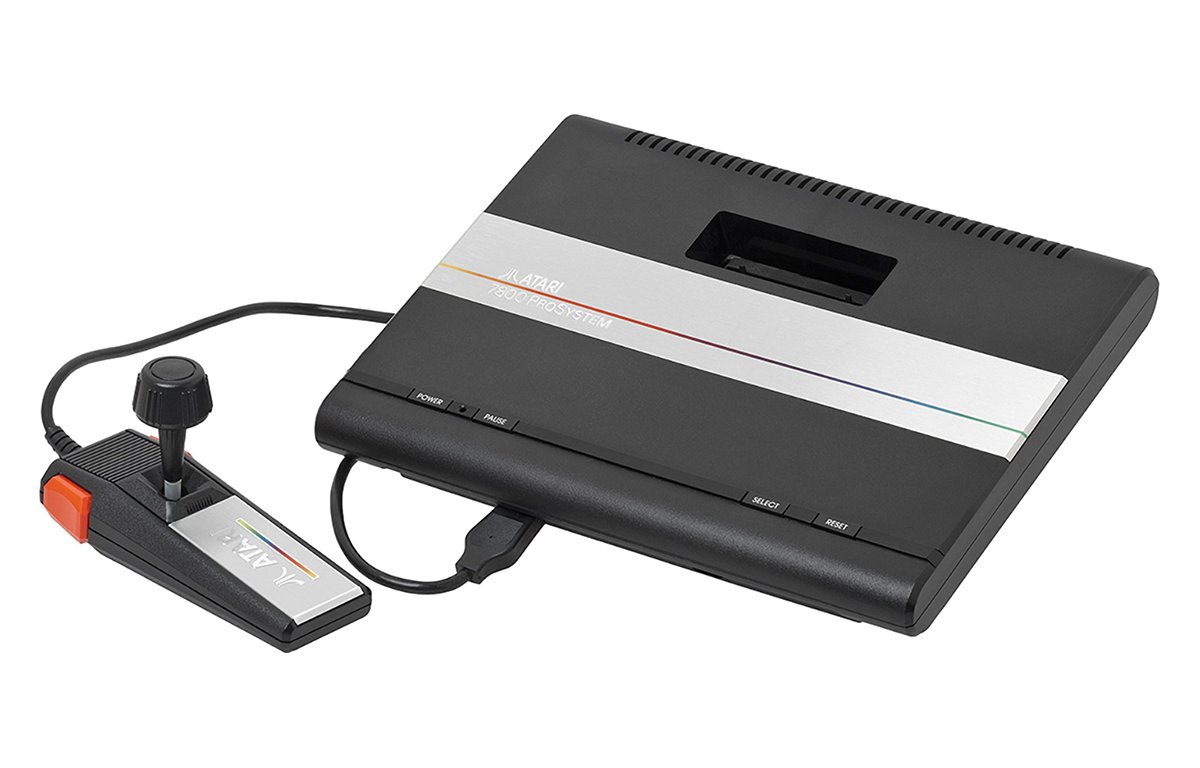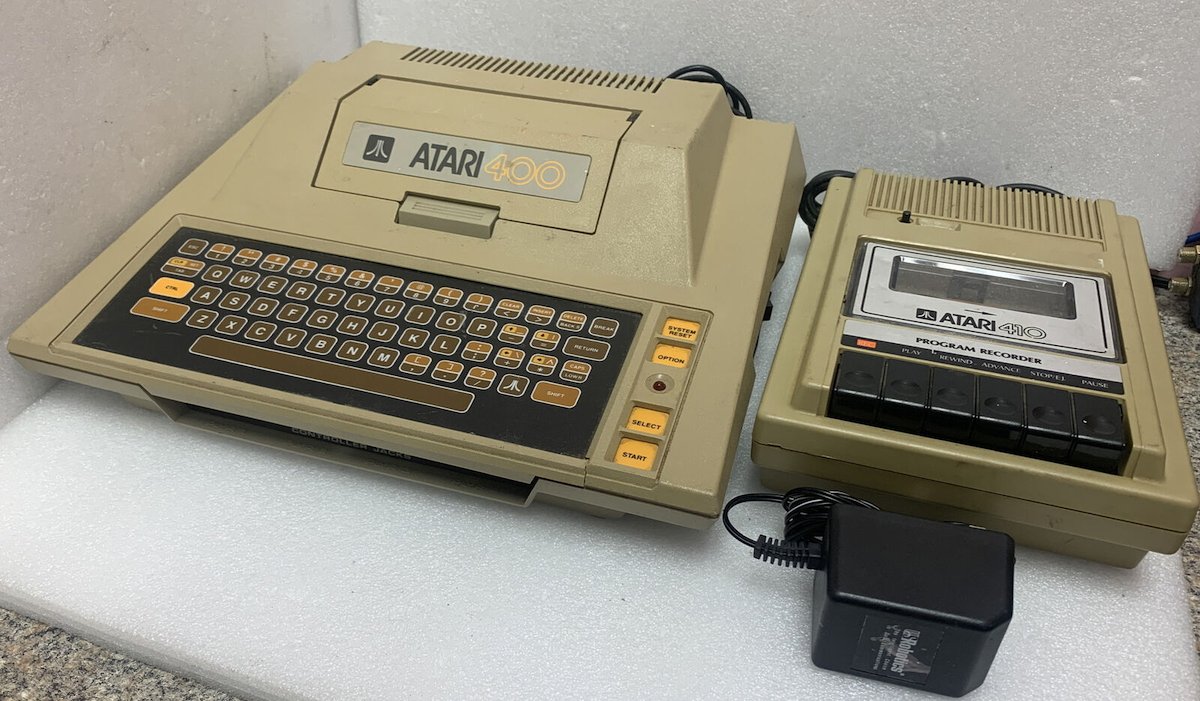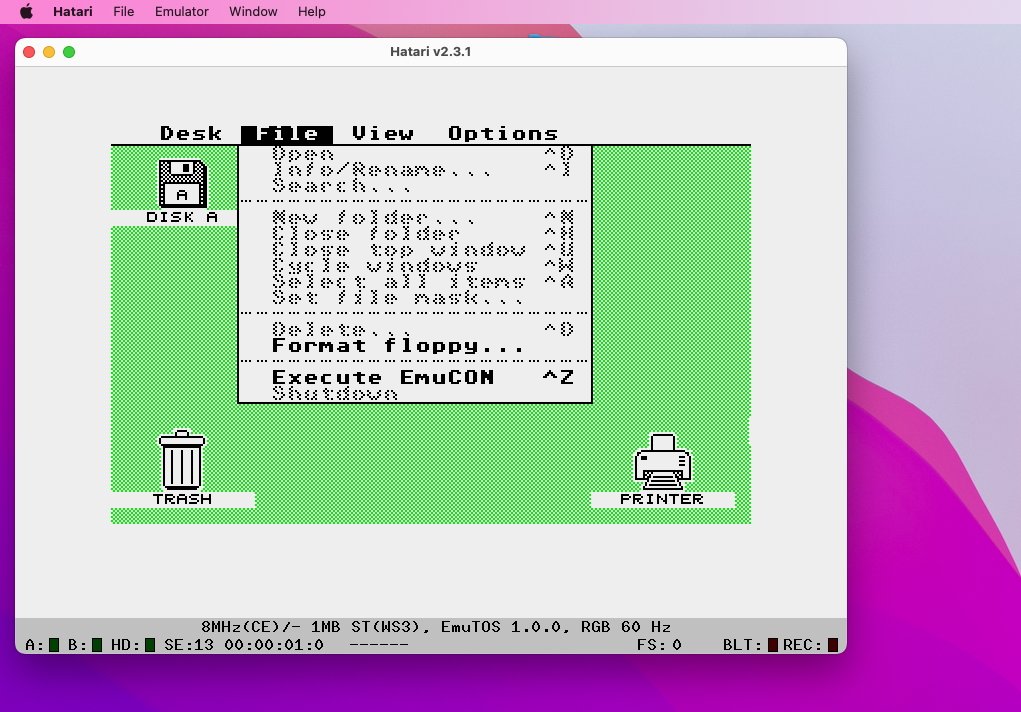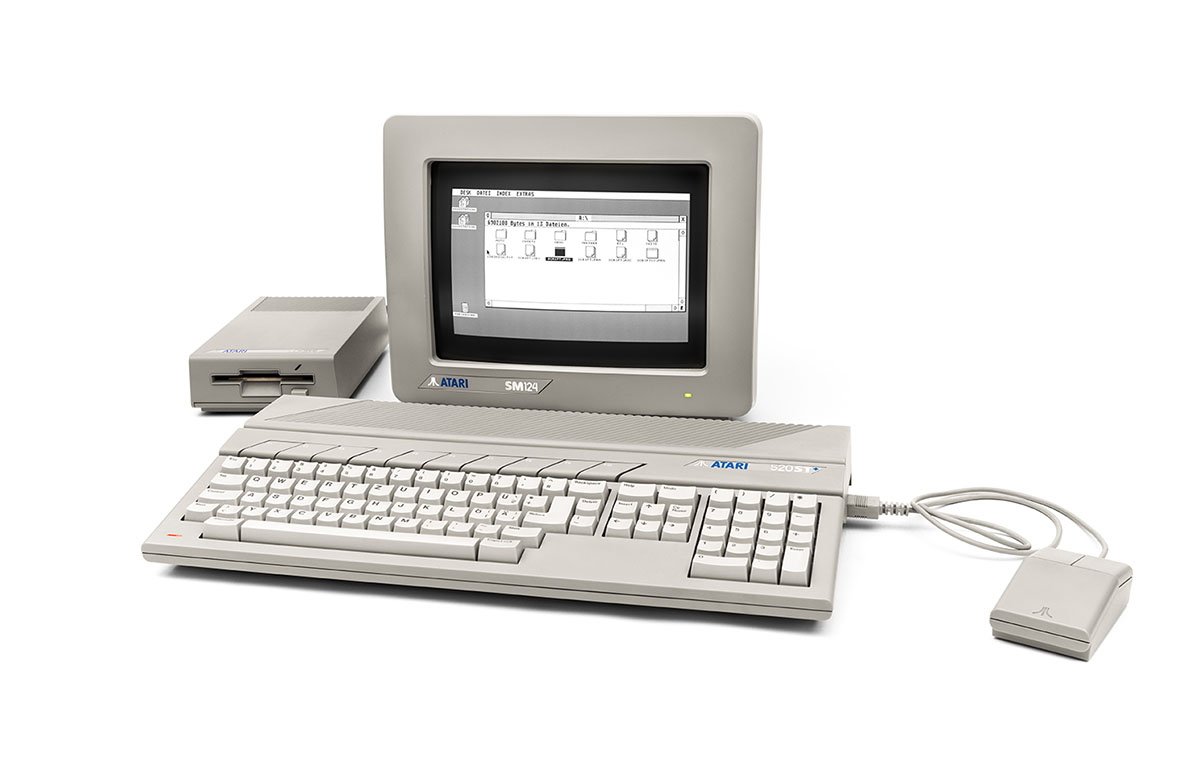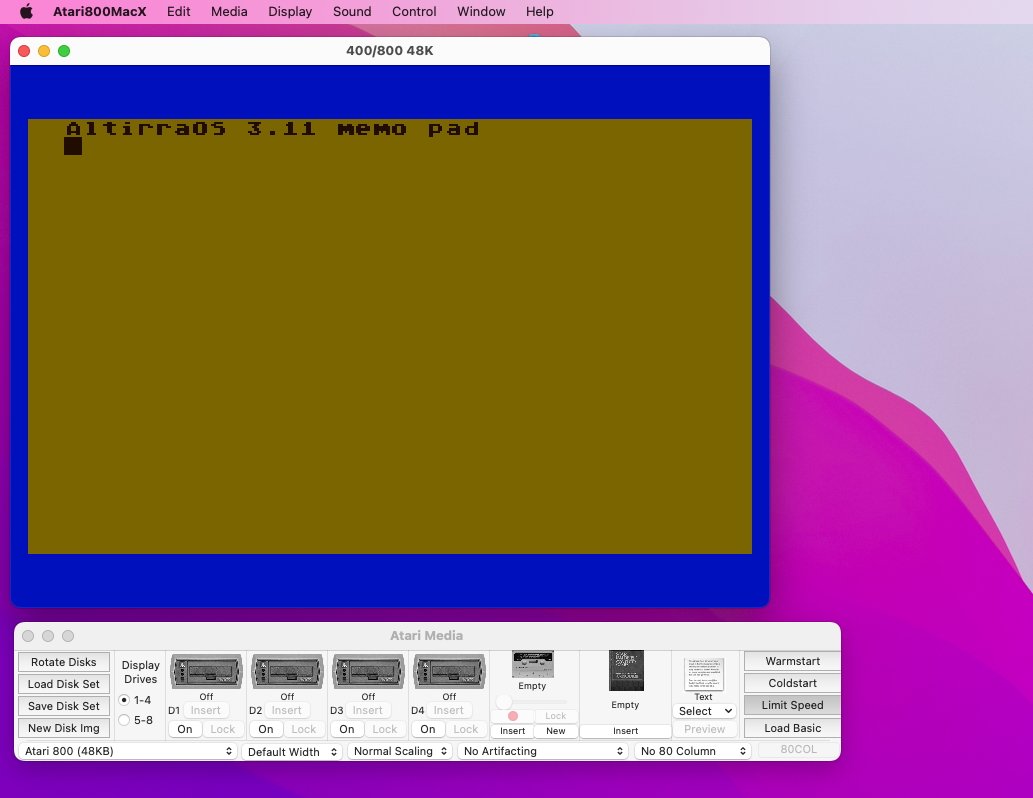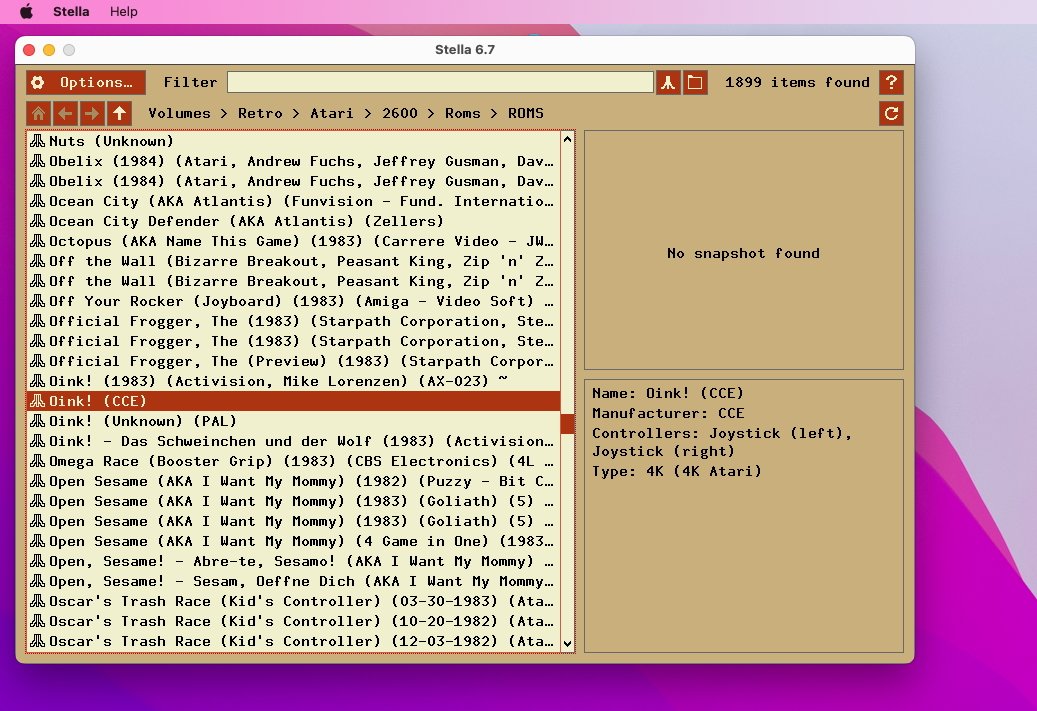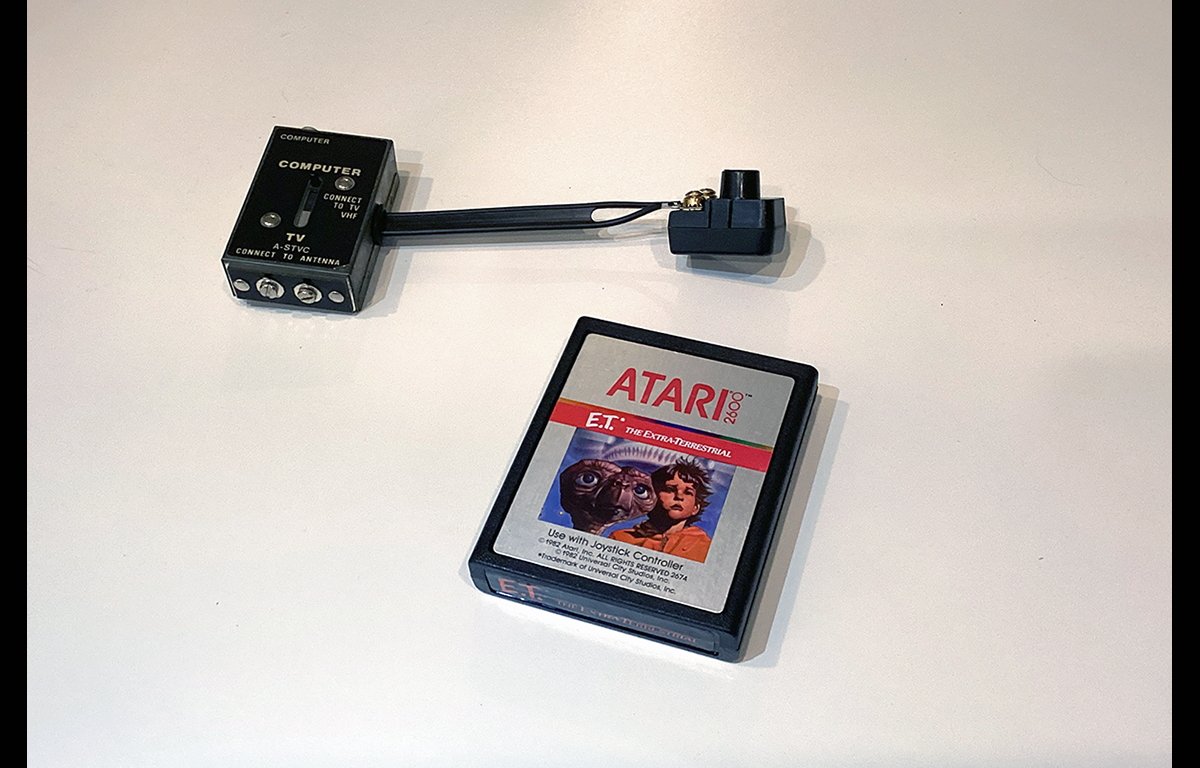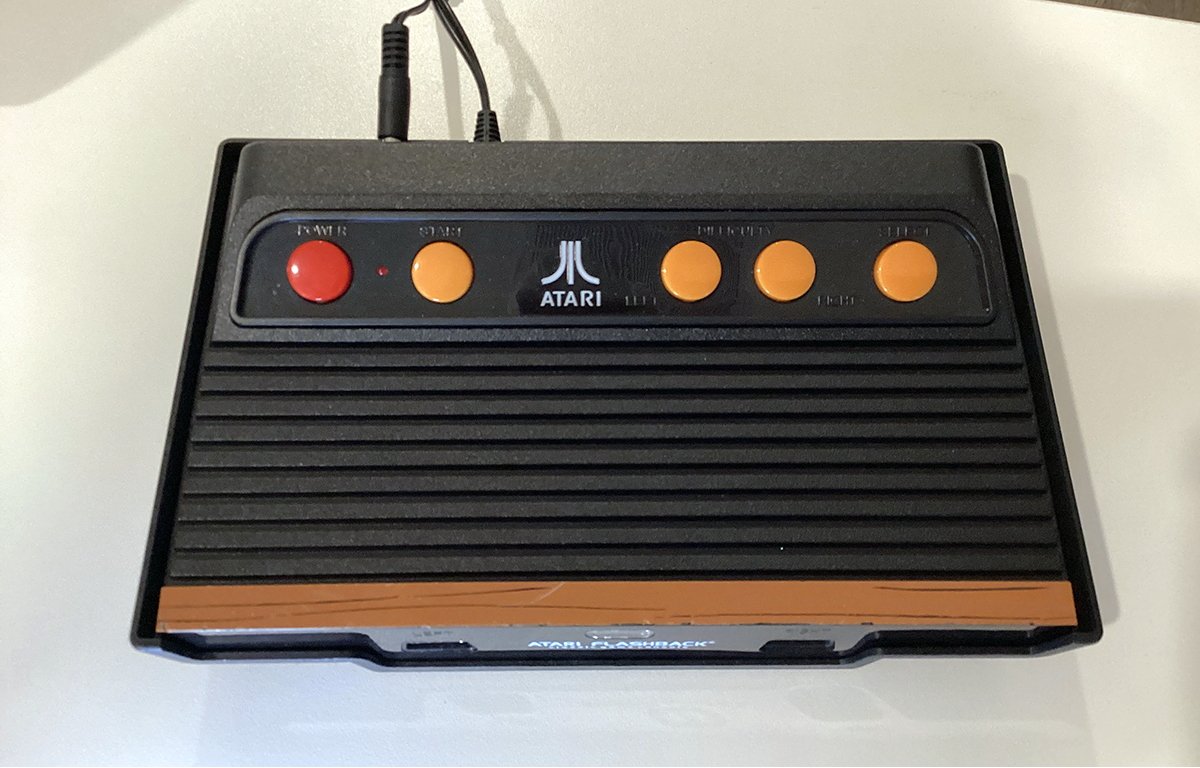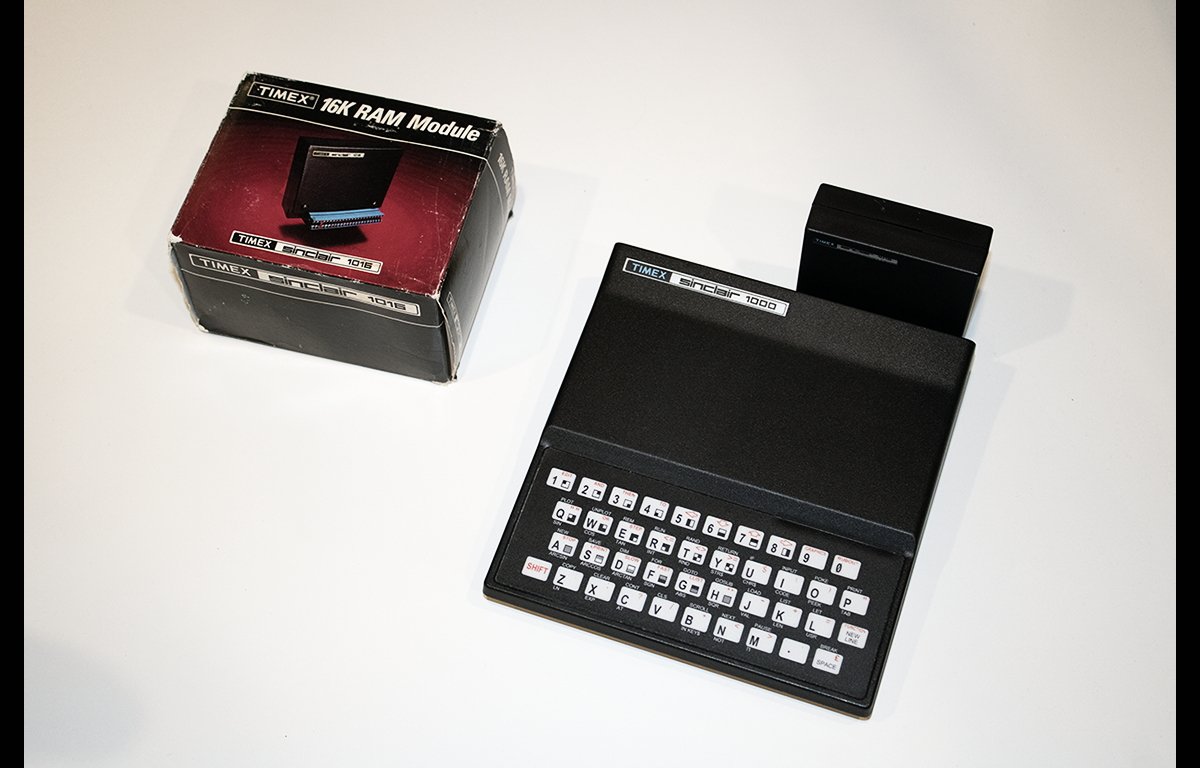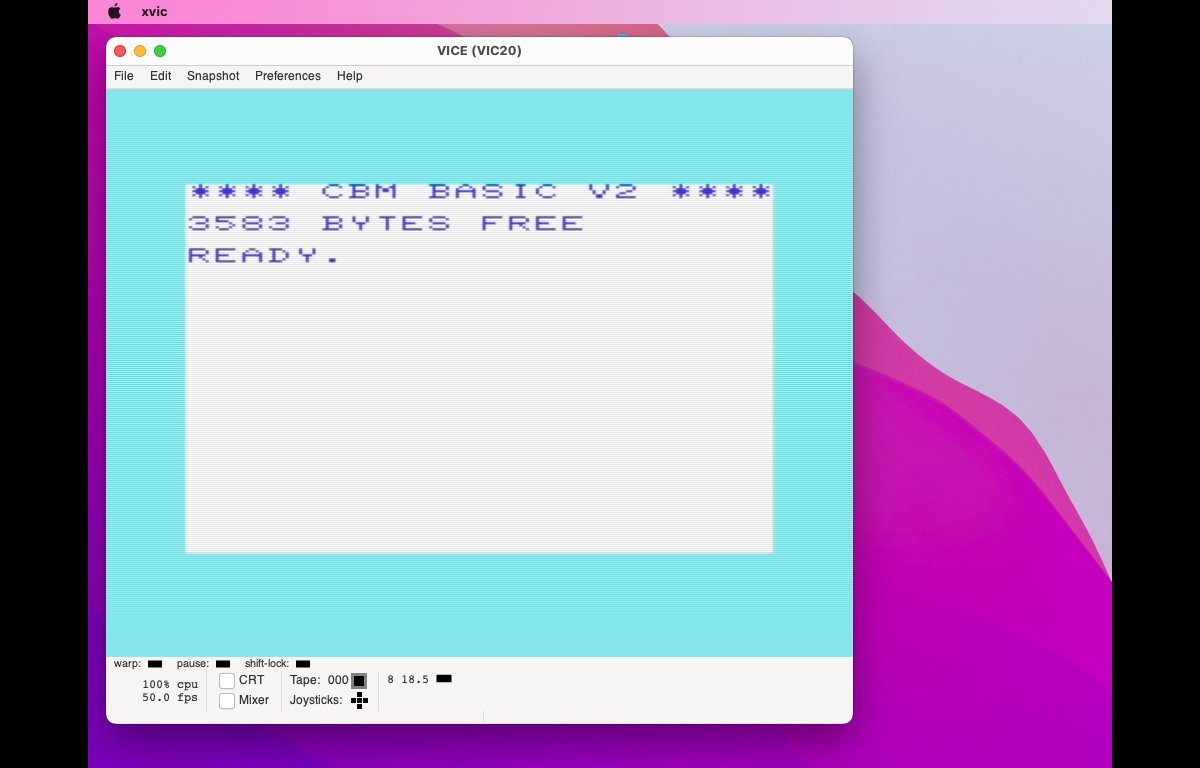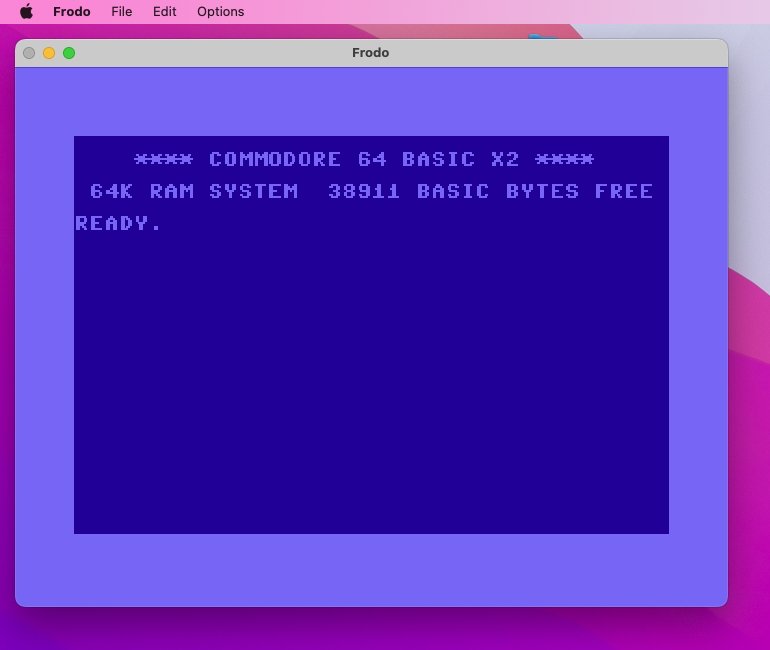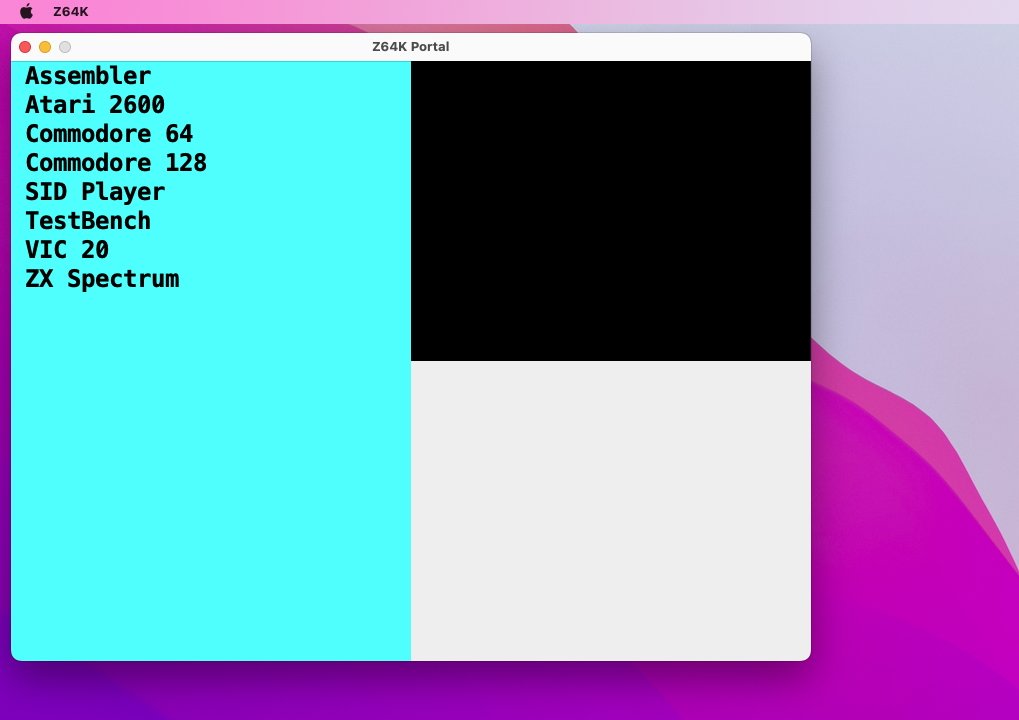[ad_1]
AppleInsider may earn an affiliate commission on purchases made through links on our site.
Running 1980s home computer software on your modern Mac is fun, but can be done in many different ways. Here’s how to run retro Atari, Sinclair, and Commodore software on the latest hardware.
In Part 1 of our series on classic emulators, we looked at running vintage Mac, Lisa, NeXT, and Apple II software on your Mac.
In this part, we’ll look at four more of the 1980’s major home computers: VIC-20 and C64 from Commodore, Sinclair ZX81 and Timex/Sinclair 1000, and Atari 400/800 and consoles.
Atari
Another key Silicon Valley company that helped launch the home computer revolution was Atari, which originally started the home video game console industry with home Pong consoles and the Atari 2600 (originally called Video Computer System) in 1977. The 2600, which only lasted five years sold an astonishing thirty million units, which at the time was unheard of.
The Fairchild Channel F, a similar console launched a year earlier, was considered a commercial failure – and only sold 350,000 units worldwide.
Known for being big and bulky, most of the 2600’s flat, black case was taken up by a massive metal internal RF shield surrounding a small central circuit board with a ROM cartridge slot for game cartridges. A smaller board at the top of the case contained power, reset, and difficulty switches.
Atari later licensed the 2600 to Sears, which rebranded it as TELE-GAMES.
The 2600’s killer app was Space Invaders, a port of the wildly popular arcade game. Asteroids, another arcade hit soon followed along with Missile Command, Centipede, and others.
The video game company Activision produced fifty-four game cartridges for the 2600, some of which such as Kaboom!, Barnstorming, and Fishing Derby became the console’s most beloved games.
Later, Atari launched three successive smaller, lighter 2600 models called the 2600 Jr., which was about half the size and a quarter the weight of the original. Inside it featured a smaller, single-board design and reduced component set.
You can still get refurbished 2600 Jr’s today on Amazon, eBay, and other online retailers. Here’s a Jr. with an original Atari joystick, and six classic games, including two from Activision:
After the 2600, Atari later launched two additional game consoles, the 5200, and 7800. While the 5200 was considered a failure and criticized for its controllers, the 7800 did fairly well, selling a million units by 1988.
The 7800 was followed in 1987 by the Atari XEGS, which was essentially a repackaged Atari 65XE (see below).
As a footnote, the manufacture of the 7800 was contracted out to several third parties. One of which was GCC Technologies, which in the mid-1990s made some of the first external SCSI drives for the Mac, with its UltraDrive line of 45MB/80MB hard drives.
When Atari saw the release of the Apple II and its wild popularity, it released two of its own home computers in 1978: the Atari 400 and 800. Both ran a proprietary Atari OS, had cartridge slots for video games and other cartridges, and offered RAM and expansion card slots beneath a top cover:
The 400/800, and later XL models were based around 3 major chips: CTIA and GTIA, ANTIC, and POKEY. As a footnote GTIA was made by Japan’s OKIDATA, which in the 80’s also made a low-cost color printer for Atari machines: the Okimate 10.
The Atari 800 also offered built-in BASIC and other features lacking on the 400. Namely that the 400 featured only one cartridge slot and was little more than a memo pad without either a program loaded from a floppy disk, or a game or programming language cartridge such as BASIC, PILOT, or LOGO.
A nearly unusable membrane keyboard also hobbled the 400.
Priced at $550, and $1,000 US dollars, respectively, both machines were considered expensive, but by far much more affordable than the Apple II’s whopping $1,500 price tag. The next time you buy a MacBook or iPad Pro and pay $1,000 keep in mind that adjusted for inflation the Atari 400 and 800 today would cost $2,000 and $3,800.
Atari also sold a rather large and heavy 810 5.25-inch floppy disk drive, a 410 cassette recorder, and an acoustic-coupler modem for both machines. The modem required the Atari 850 interface unit to operate.
Later Atari introduced a revised line of similar 8-bit machines including the smaller, lower cost 600XL, an 800XL, and 1200XL. All were mostly cartridge-compatible with the 400 and 800 models. All XL models did well in the market, and in 1985 Atari again redesigned the line and released the 65XE and 130XE.
When the first Macintosh appeared in 1984 with its graphical interface, Atari immediately set to work on its own GUI-based computer, the Atari ST. The two ST models faired well also, selling over 2 million units.
Both ran Atari’s new TOS OS along with Digital Research’s GEM operating system. The ST models were the first PCs offering a color mouse-driven GUI:
The ST models featured a thinner, wider case with fewer components, and a 3.5″ floppy disk drive much like the Mac Plus’s. Both ST models also used the same CPU as the Mac Plus – an 8MHz (yes, MHz) Motorola 68000.
There are several Atari 800 emulators available, but by far the best on the Mac is Atari800MacX, which features disk and cartridge support, and even vintage Atari printer support. During the Atari XL line, Atari also produced the tiny Atari 1020 thermal printer.
All Atari peripherals connected via a proprietary connector called SIO. Atari800MacX also provides SIO2OSX – an Atari peripheral emulator which lets you emulate any original Atari SIO peripherals. You can even find brand-new replacement SIO cables on eBay and other sites for under $20.
When Atari released the XL line of computers it also introduced a new line of peripherals including the 1027 printer, 1010 cassette drive, a newer 1050 5.25-inch floppy drive, and a new direct-to-phone digital modem, the 1030.
Both the Atari 2600 game console and the Atari 8-bit computers shared a common CX40 Atari joystick based on a 9-pin connector, which could be used on any of the computers.
Today, for Atari emulation, there are several great options. For 2600 emulation, Stella is the first choice.
Stella was the codename of the 2600 project, and its TIA, or Television Interface Adapter. (Late 70’s early 80’s home computer and console engineers developed a tradition started by Jay Miner of codenaming system chips after their wives or girlfriends, and as we will see, the trend stuck).
Amazingly, Atari’s original CEO, Nolan Bushnell has resurrected the company and a newer, Linux-based VCS was produced in 2018, and is still available on atari.com, although production of the new system has ceased as of 2023. atari.com also offers new, special “>limited editions of some of the original 2600 games for around $100 each.
He also has a website and is now a mental health counselor.
Warshaw was the author of the 2600 game E.T.: The ExtraTerrestrial based on the 1980’s Stephen Spielberg movie of the same name. The ET game was much maligned, and when the video game crash of 1983 hit, in order to legally write off inventory, Atari infamously dumped thousands of unsold copies of the ET game into a Utah landfill.
Warshaw also wrote another movie-based game for the 2600: Raiders of the Lost Ark, also based on the Spielberg movie.
For emulation today, the best Atari Emulators are:
For a complete list of 7800 emulators, see EmuGen.
For a complete list of Atari 400/800/XL/XE emulators, see Emutopia.
Hands down, the best general retro console gaming emulator for macOS is OpenEmu, which supports 20+ retro-consoles, including most Atari consoles, Colecovision, NES, GameBoy, Intellivsion, and early Sega consoles. You will need to install system ROMs for each console, however, and OpenEmu provides some self-installing ROMs.
From a classic console standpoint, OpenEmu is a must.
There is also C64 65XE NES Debugger by slajerek, which allows you to run and view Atari 65XE, Commodore 64, and NES apps in real time, view their assembly as it executes, set breakpoints, and more.
Xformer 10 is an 400/800/XL/130XE emulator, but it is Windows only and hasn’t been updated in a few years.
In 2017, AtGames released licensed mini Atari consoles called Atari Flashback, now in its 10th iteration. Later models feature HDMI out for picture-perfect Atari gaming. They also released a 7800 version.
Sinclair
Founded by UK’s Clive Sinclair and starting as an electronic calculator maker, Sinclair Research produced several computer kits in the 1980’s.
The first Sinclair computer was the ZX80 kit, which was available via mail-order and based on the Zilog Z80 CPU. Two years later Sinclair released a new model called ZX81.
Users had to assemble both by hand. ZX81 was tiny, with a small plastic case, membrane keyboard, 1K of RAM, and an external expansion connector. Sinclair also released a 16K memory upgrade module that plugged into the back.
US watchmaker Timex licensed the ZX81 for an American model which was called the Timex/Sinclair 1000, and a 16K RAM expander, the 1016. A 32K version was planned but never released.
In fact, Sinclair had hired a Timex factory in Scotland to manufacture most ZX81s, and both the ZX81 and TS1000 as it became better known were made there. Thousands of TS1000s were sold in the US and Canada along with a small thermal printer, the TS2040.
Timex added a 1500 model which was smaller, and offered a rubber-chicklet keyboard much like Sinclair’s color model of the ZX81, the Spectrum. Spectrum was adapted for North America by Timex in a larger case for a model called the 2068, which included a front cartridge port.
Both the ZX81 and TS1000 cost under $100, which was a major selling point. Corners were cut to keep costs down, including leaving the entire solder mask off the top of the motherboard and shenanigans with RAM bank switching to reduce RAM costs.
Several other UK Spectrum models followed including the Spectrum+, Spectrum 2, 128K, Spectrum 3, and others. Later models included a larger case and a full-sized keyboard.
Hundreds of third-party companies sprang up around Sinclair computers from 1980-1983 with many add-ons, expansion modules, keyboards, printers, RAM packs, and software.
Sinclair and Timex models lacked disk drives initially and most programs were loaded/saved to cassette tapes on standard audio recorders of the day.
Sinclair finally released the Spectrum Microdrive for most Spectrum models which was a tiny proprietary disk drive in a case that snapped onto the expansion port.
Renewed interest today in Sinclair computers has led to a host of new companies and sites springing up. You can even get a brand new plastic Spectrum plastic case ($40) in several colors, along with a new rubber keyboard, membrane ($13), and replacement Microdrive shell ($20) at RetroRadionics.
They even offer a fully modernized and restored complete working Spectrum 128 model in a new case called the “OMNI DESKTOP 128HQ” for $130.
ByteDelight offers a wide range of new ZX81 and Spectrum replacement parts and add-ons – including a new modern SD card reader called DivMMC, ZX diagnostic carts, Ethernet, WiFi, audio, mouse, LED light-up keyboards, ROMs, and even floppy drive interfaces.
They also offer two entire new Spectrum kits called “Harlequin“, in 128K and 48K versions for $93 and up. You’ll need good soldering skills and patience to assemble them, but when done you’ll have a brand new working Spectrum computer.
If you have a working TS1000 and just want it modernized and upgraded with new parts, check out ts1000upgrade.com which offers several upgrades including keyboard replacement, and a complete refurb ($150). They also can add a composite video mod so your TS1000 works with modern TVs which have composite input.
There are several top Sinclair/Timex emulators for macOS:
Fuse and zxsp are on par with each other, except that zxsp allows you to emulate nearly every model of Sinclair, Timex and Spectrum machine ever made, and the Jupiter ACE.
There are also three very cool online ZX81 emulators:
There are also several ZX/Spectrum emulators for iOS and Android, the two best being Spectaculator ($3, iPad only), and ZX81 (iPad only).
If you have a Raspberry Pi you can also download or purchase a pre-built multiple-machine Spectrum emulator for that platform, which turns your Pi into a full working Spectrum clone.
David Anderson has written a fabulous book: Everything Timex/Sinclair: The Guide to All Hardware, Software and Accessories for the Timex/Sinclair Computers and has a definitive website for all things Timex/Sinclair. He also has a weekly podcast and YouTube channel.
Also, be sure to check out the BBC movie Micro Men, a quasi-fictional account of Clive Sinclair and Sinclair Research.
Commodore
As the 1970s turned to the 1980s, a new player entered the market: Commodore Business Machines, (later Commodore International).
Like Sinclair, Commodore started out as an electronic calculator maker competing with the dominant calculator maker of the day: Texas Instruments. Prior to that it made mechanical typewriters.
In fact, nearly thirty years later Apple would borrow one of the original Commodore typewriter model numbers: the 4400.
Commodore got into the PC business with the Commodore PET – a massive PC in a huge metal box with a built-in monitor. PETs were mostly sold to businesses but faced stiff competition from the Apple II.
Commodore decided the home market was more lucrative and easier, so it set out to make a low-cost home computer for around $300 to compete with the ZX81, TS1000, and Atari computers.
The result was the Commodore VIC-20, which became the first home computer to sell a million units. Like Apple II, Atari, and many other computers of the day, VIC-20 was based on the Motorola 6502 CPU, which was the first real low-cost PC CPU allowing home computers to be affordable.
“VIC” was short for “Video Interface Chip”. The VIC-20, however, was limited in several ways: 3K of RAM, expandable to 32K, low-resolution display with large characters, and an AC power supply on the motherboard which could destroy the entire machine if the power supply failed.
The VIC-20 and later Commodore machines ran a proprietary Commodore OS called KERNAL. The VIC-20 had three ROMS: Kernal, Character, and BASIC. Commodore revised the VIC-20 four times, and the final version, an “RC” or “Reduced Cost” version was the last of the VIC-20 line.
Commodore’s follow-up was the wildly-successful Commodore 64 which offered a much higher resolution display, 64K of RAM, expandable to 1MB, an enhanced sound “SID” chip, and hardware sprites for smooth graphics, which sold for $599 – a steep sum for the early 1980s.
Customers loved the “C64” as it became known and it became the most popular home computer of the 1980s, and the best-selling home computer of all time.
Commodore also made a cassette drive for both machines, and several floppy drives, including the most popular 5.25-inch drive: the 1541 (which was a computer unto itself and also had its own 6502 CPU inside).
All of this was before the commercialization of the internet and Commodore also made a modem for the VIC-20 (the VICMODEM), and later models for both the VIC-20 and C64. Modems used landline telephone technology to dial up other computers for communications – and to connect to BBS’es.
Dave Bradley, one of Canada’s top BBS operators in the 1980’s now has a YouTube channel with a variety of tutorials and discussions about vintage Commodore computers and software.
There were several models of the C64, the last being the C64C, after which commodore introduced the Commodore 128, which was a failure because it didn’t really offer much that was new, other than 128K and a few other improvements.
As a result of the C128’s failure, Commodore began to decline. In an attempt to save the company, Commodore introduced several smaller, more limited models: the C16, C116, and the Plus 4, none of which faired well.
Both VIC-20 and C64 included a keyboard, cartridge port, serial and video ports, a cassette port, and a user port for other peripherals.
There are several great VIC-20 and C64 emulators, but the definitive standard is called VICE – the Versatile Commodore Emulator. VICE runs nearly every model of early Commodore home computer from VIC-20 to Plus 4, and it’s easy to use. It also offers peripheral support.
Two newcomers to the Commodore emulation arena are VirtualC64 by Dirk Hoffman, and micro64, although micro64 is still yet a little unpolished. VirtualC64 is slick, but the file loading system takes a little getting used to.
Frodo is another very nice C64 emulator, but it lacks comprehensive peripheral support like VICE and others have.
Vx02 is another C64 emulator.
If you have Java installed on your Mac, check out the very cool Z64K multi-emulator. This single .jar file can emulate Atari 2600, VIC-20, C64, C128, and ZX Spectrum – all from a single-window interface. Just double-click the .jar file, select a machine, then click the Start button and you’re off and running.
You may get a macOS Gatekeeper warning the first time you run Z64K, so you’ll need to open System Settings->Privacy & Security and click “Open Anyway” to allow it to run.
Basil PET Emulator is a Commodore PET emulator that runs on the C64. So you can run PET programs in Basil running in a C64 emulator.
commodoreserver.com is a Commodore cloud file storage and retrieval site which also sells new WiFi modems for the C64. You can store your C64 files and apps on the site, then use one of their WiFi modems to download those files from the internet wirelessly. They also have a C64 TrueType font you can install on your Mac.
RetroReceipies has a video on how to build your own brand new C64 with nearly all new parts.
The final model in the original line of Commodore home computers was the unreleased Commodore 65. A dedicated group of enthusiasts has resurrected the Commodore 65 in a new project: the MEGA65, which is in pre-order.
Amiga
After the failure of the three new Commodore computer models, the company had to take drastic action. The result was an entirely new line of Commodore computers called Amiga (Spanish for “friend”).
The first model – the Amiga 1000 was large – far larger than any previous Commodore home computer. Commodore followed up with the Amiga 500, 500+, and 600 models in much smaller cases, followed by the 1200 in a somewhat larger case.
In 1994, largely due to competition from Apple and Microsoft, Commodore closed its doors forever.
Strangely, after Commodore closed, its original founder Jack Tramiel and several key employees bought the remnants of Atari after the video game crash of 1983 and formed a new company, Atari Corporation. Many of the original Commodore employees were instrumental in the development of Atari ST and 7800.
All Amiga models were based on the same original CPU as the first Macs: the Motorola 68000. Amigas ran a new Commodore OS called AmigaOS developed jointly with Hyperion.
You can still buy the final version of Amiga OS 4.1 available in the US only at amigaonthelake.com ($52).
They also sell the Amiga Windows emulator package Amiga Forever on DVD ($39). They also have add-ons, adapters, PCBs, modems, and new Atari SIO cables.
Top Amiga emulators for macOS include Denise, FS-UAE and vAmiga. (Denise was the name of the Amiga’s graphics chip). Denise can also run some C64 program files.
Also, check out Amiga enthusiast Dan Wood’s YouTube channel.
Given so many classic emulators for macOS and Windows, it’s easy to run old software from the 1980’s and early 90’s on your current Mac today. There’s a huge range of emulators and more continue to appear every few months.
In our next installment in the series, we’ll look at two remaining classic 1980’s home computers and emulators for them: the Tandy TRS-80 series, and Texas Instruments’ TI/99-4A.
[ad_2]
Source link

